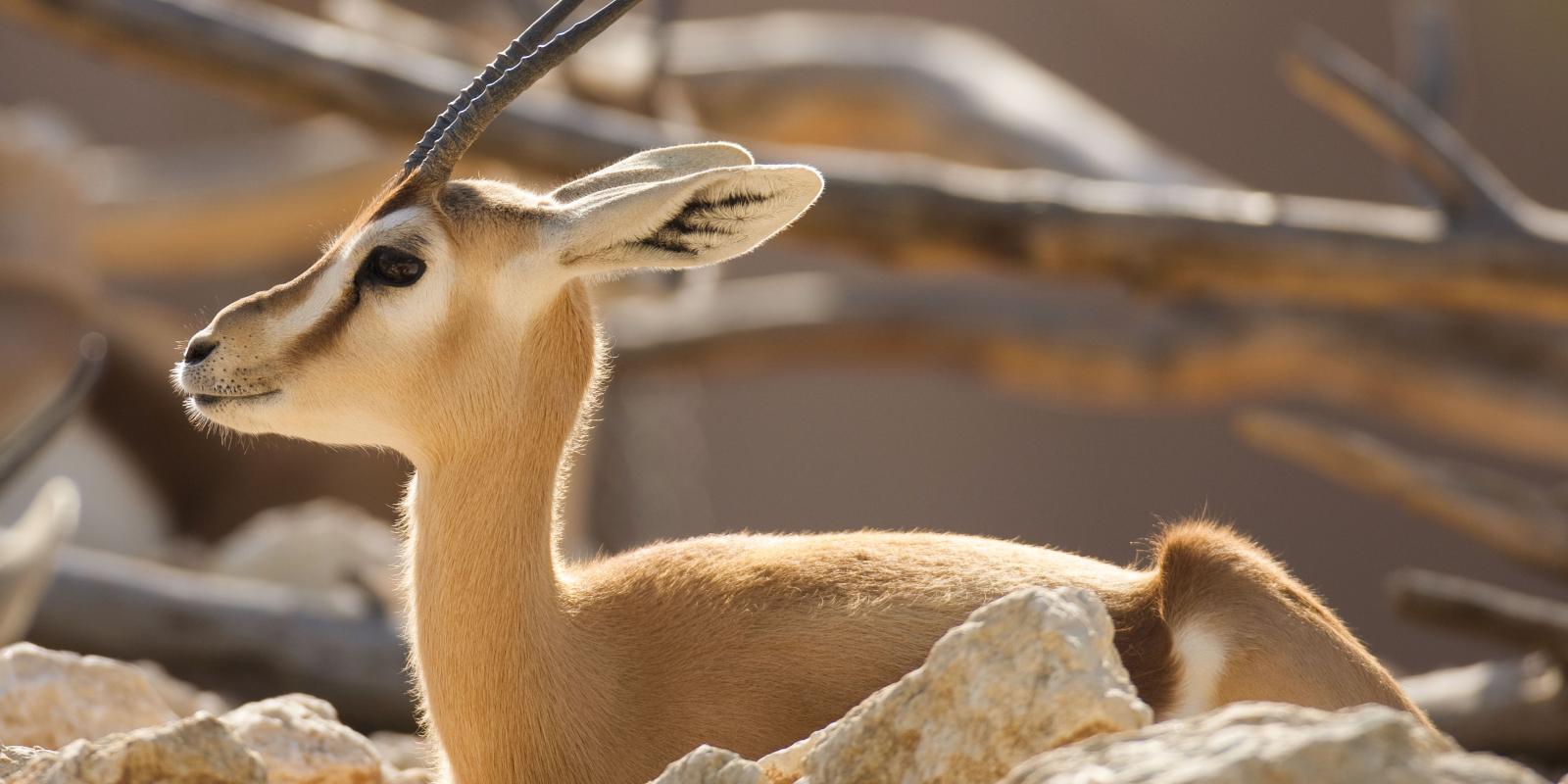Qatar’s rich and unique landscape is not only home to a diverse community from around the world, but a range of wildlife animals that are fascinatingly beautiful.
Despite its hot weather, Qatar is home to a range of captivating wildlife species that can be admired by all. To mark World Wildlife Day, Doha News sheds the spotlight on five of the country’s wildlife – some of which have strolled the land and soared through its skies for centuries, becoming an integral part of Qatar’s culture.
Foxes

Although Rueppell’s Foxes are deemed rare in Qatar, they are considered witty survivors. With their beautiful coat and sneaky personalities, the ability to actually spot one is quite an achievement.
Rueppell’s Foxes have sandy-coloured coats that are ticked with numerous white hairs. The colour red fades along the middle of their backs, and ends with pure white on the underparts and tip of the tail.
These foxes spend most of their days in caves and become active at night when they begin hunting for their prey. As desert lovers, the foxes are highly adapted to life in the heat and have long, pointy ears to help them cool off from the harsh weather. They also have soft fur on the pads of their paws to protect them from the heat of the sand, all of which help them survive in Qatar.
Arabian Oryx

The Arabian Oryx is considered the country’s national emblem – so it is not at all surprising to see it in logos and emblems across the country. The Oryx is the symbol of national carrier Qatar Airway’s and was the mascot for the Asian Games 2006.
Their coats are bright white, and they boast brown legs. Its underbelly blends beautifully with its coat and its black stripes between the head and neck, forehead, nose, all the way down to the horn, eyes and mouth, is clear for everyone to see.
However, the Oryx has seen some not-so-beautiful days. At one point, it was one the verge of extinction, but was luckily saved by sanctuaries that started breeding the Arabian Oryx in captivity, producing 75-100 calves each year.
In Qatar, The Arabian Oryx Sanctuary, also known as Al-Maha Sanctuary, is the only breeding place for this particular animal.
Falcons

Falcons are no strangers to this land. In fact, over seven species of falcons live right here in Qatar, making the beautiful bird one of the most integrated animals in the country’s culture. These include the Amur Falcon, Sooty Falcon, Lanner Falcon, Saker Falcon, Peregrine Falcon and the Barbary Falcon, all of which can be spotted in the country.
However, and surprisingly to many, falcons are not native to the land. Speaking to Doha News, experts confirmed falcons are imported from abroad with a permit and are then used for hunting or falconry in the country.
However, falcons are so respected in Qatari culture that some can cost thousands of riyals. There is a hospital specifically for falcons in Souq Waqif.
Read also: ‘Qatar Falcons’ released into the wild as campaign takes flight
Due to its majestic look and sharp eyes for hunting, falconry has become a prominent tradition in Qatar. What started as a means of hunting for food in the Arabian Peninsula, has become one of the most important cultural elements of Qatar.
The roots of the ancient art of falconry can be traced to the 7th century, when it began as an easier method of hunting for food.
Bedouins in what is now modern-day Qatar mastered the art, and when falcons were no longer needed for hunting, falconry became a time-honoured tradition. The sport involves a deep connection and relationship between the raptor and falconer, which develops with rigorous training.
Cape Hare

You may consider this little bunny cute, but its advised to stay away well away. The Cape Hare, known as a Desert Hare, lives comfortably along the sand dunes of Qatar and has developed unique features that allows it to survive there.
Hares are solitary animals, and like foxes, are active mostly at night. Although they look fluffy, they can run at a speed of 48 m/h (77km/h) to catch their prey. They are also excellent swimmers and climbers and can scan the area while lying down to rest. Their large eyes can cover a field of 360 degrees.
The hare has well-developed legs for leaping and running, and large eyes and ears to identify nearby threats. Its soft coat, which varies in colour from light brown to reddish to sandy grey, helps it camouflage in the desert to increase its chances of survival.
Arabian Gazelle

Arabian Gazelles are a sight for sore eyes. They have dark brown coats, white underbellies and black, short, and bushy tails. They have relatively short ears, and both males and females have horns.
The Arabian Goitered Gazelles or “Rheem” are the only native gazelle species to Qatar.
They are extremely fast sprinters and can reach speeds of 80km per hour. They thrive in locations with mountainous and hilly habitats consisting of light forests, fields, or desert plateaus.
Follow Doha News on Twitter, Instagram, Facebook and Youtube







